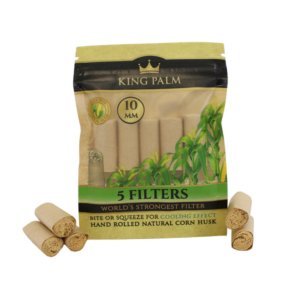Filter tubes are cylindrical structures that serve as filtration devices for liquids and gases. They are made of various materials, such as paper or synthetic fibers, and come in different sizes and shapes to fit the specific needs of different applications. Filter tubes can be used in a wide range of industries, from automotive and aerospace to food processing and pharmaceuticals, to ensure that only clean substances flow through machines, pipelines, or equipment. They can also prevent contamination and protect against environmental pollutants. In this article, we will explore the types, uses, benefits, and maintenance tips for filter tubes.

King Palm Wraps Filters 10MM
$33.99 37.99
In Germany during the 1930s smoking was a widely popular habit but it had garnered significant criticism from health experts due to its known adverse respiratory outcomes. In response to these concerns and as an alternative solution, filter tubes were invented to help reduce the harmful effects of smoking on users.
Filters being used for cigarettes is not new; however, the concept of inserting filters into empty tobacco tubes was initiated in Europe in order to let individuals control their nicotine intake better. This led to more widespread use of Filter Tubes for rolling your own (RYO) cigarettes which became popular around the world by the 1950s.
Initially made using diatomaceous earth – a naturally occurring mineral compounded with fossil remains - retailing filter tubes are now manufactured with cellulose acetate fibers, alongwith other materials like activated carbon granules inside them.
The production process involves cutting and perforating two pieces of paper before hitting them with pressure—a technique developed by German engineers during WWII—and then inserting fibers inside while giving shape that allows them fit into cigarette rolling machines easily.
While many still view filters as a healthier option than non-filtered cigarettes; there's general agreement among health experts that long-term smoking isn’t healthy at all - no matter how you smoke it!
In conclusion, although innovative inventions designed to make negative habits safer options might be applaudable in their own way—smoking remains one unhealthy indulgence where alternatives cannot entirely erase its hazardous consequences!